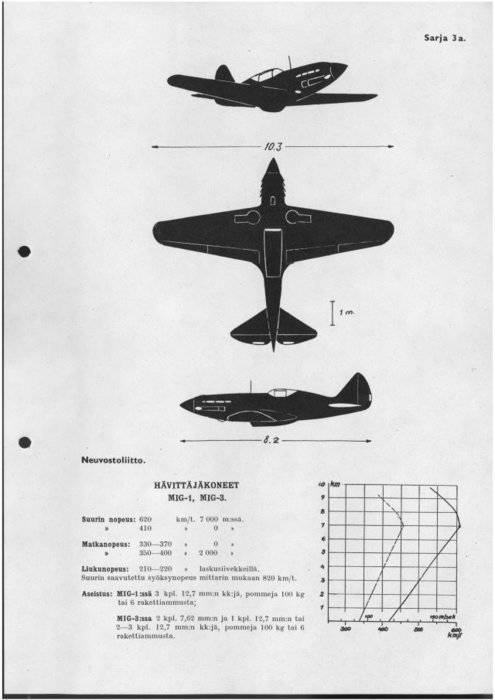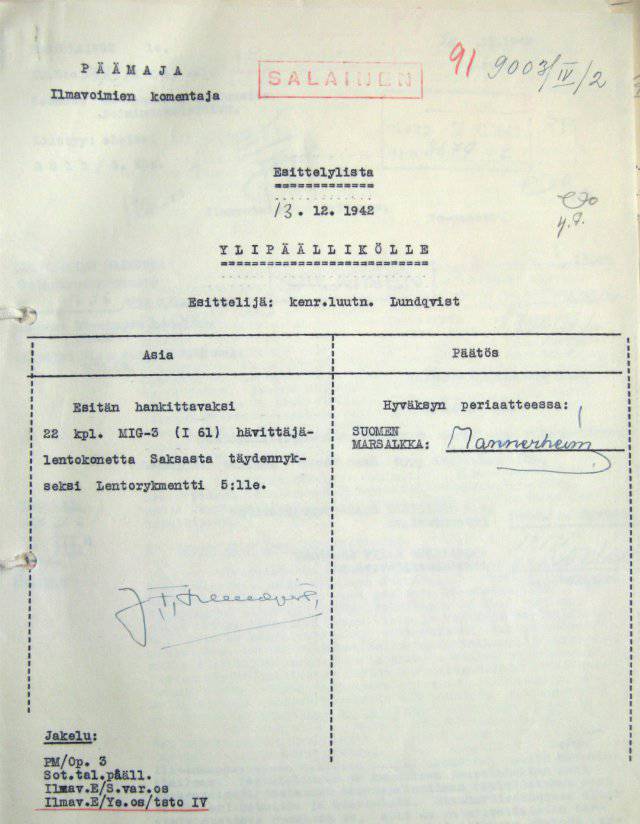MiG-3 for the Finnish Air Force

In December, 1942, Finland received an agreement from Germany for the sale of Bf.109G-2 fighter jets in the number of 30 units, but Germany’s offer was not limited to this. A major engineer, Harry 2, who was sent to Berlin, reported to the headquarters of the Finnish Air Force that Germany could also offer a batch of 22 MiG-3 fighters in flying condition. The headquarters of the Air Force responded in the spirit that, they say, we are certainly “for”, but I would like to receive MiGs for free. It seems that the Finns still do not have a repair base for MiGs, but fighters could be used as long as they flew.
The Germans, however, did not appreciate the “generous” offer of the Finnish colleagues. Already December 7, the Finns received a message that the Germans are ready to transfer from 15 to 22 MiGs at the price of 30 thousand Reichsmarks (or 591 thousand Finnish marks) for each. In general, it was quite a humane price. For comparison, the Fokker D.XXI IV series (with the Wasp engine), which was called the fighter rather out of habit, cost 640 thousand Finnish marks, SB - 1,2 million, and Pe-2 - 2,5 million. New Messerschmitt cost the Finnish treasury 4 million marks (second-hand - at 400 thousand. Cheaper). The commander of the Finnish Air Force once again tried to achieve the receipt of MiGs "for free", but December 14 again received the answer that MiGs cost 30 thousand PM and not less pfening.
As a result, December Finns 22 signed a contract for the supply of 22 MiGs for a total amount of 660000 thousand RM (13 million Finnish marks). However, after that, the Germans seemed to have forgotten about the signed contract. February 18 Lundqvist through Harry tried to find out whether the Germans will supply MiGs or not. The request was again repeated on March 11, and the Finns had already demanded that they show them the planes and let them test them.
The check in general explained why the Germans are pulling with the transfer of aircraft. MiGs as a whole were almost new, each of them averaged from 50 to 55 hours. However, the planes were packed in boxes and partially damaged. In addition, they lacked weapons and radio stations. However, 20 March, after the inspection, Lundqvist said that the Finnish side is ready to accept the MiGs. For the acceptance and overflight of the aircraft, Captain P.E. Sovelius, but 13 of May from Harry received a message that all MiGs, apparently, were destroyed during the air attack, and therefore the contract was canceled.

A note from Lundquist Mannerheim proposing to purchase an 22 MiG-3 to reinforce the 5 air regiment. Mannerheim resolution "In principle, agree."
Information